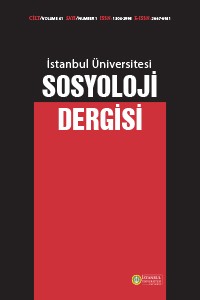Abstract
In Iran, motherhood continues to be considered an important and essential part of women’s social life. However, nonmotherhood is gaining momentum as Iranian women increasingly choose to be childfree. This study explores women’s perceptions of motherhood using the content of a Persian-language discussion and mini-blogging forum called Ninisite. Ninisite is one of the largest interactive digital spaces dedicated to topics such as family, motherhood, fertility, infertility, pregnancy, childbirth, and childcare. This study uses a combination of cyber-ethnography and critical discourse analysis to investigate users’ attitudes and perceptions on non-motherhood and childfreeness on Ninisite. The research shows the participatory and solidarizing climate on Ninisite’s interactive blogosphere to provide informative, spiritual, and affective support, not only to mothers but also to non-mothers in a context where childfreeness is stigmatized as well as socially and politically scrutinized.
Keywords
Biopolitics childfree digital motherhood religion solidarity women
References
- Ahmadi, S. E., Rafiey, H., Sajjadi, H., & Nosratinejad, F. (2019). Explanatory model of voluntary childlessness among Iranian couples in Tehran: A grounded theory approach. Iranian Journal of Medical Sciences, 44(6), 449–456. https://doi.org/10.30476/ijms.2019.44964
- Deutsche, W. (2020). Iran’s declining birth rate alarms country’s leaders. Retrieved from https:// www.dw.com/en/iran-birth-rate-decline/a-54371973#:~:text=According% 20to%20the%20 Tehran%20Times,around%20100%2C000%20births%20every%20year.
- Erdogan, B. (2016). Humanitarian intervention and the responsibility to protect: Turkish foreign policy discourse. Springer.
- Erfani, A. (2017). Curbing publicly-funded family planning services in Iran: Who is affected? Journal of Family Planning and Reproductive Health Care, 43(1), 37–43.
- Erfani, A. (2019). Iran’s Second demographic transition and belowreplacement fertility: Implications for population policies. İstanbul Üniversitesi Sosyoloji Dergisi, 39(2), 475–478.
- Gallagher, J. A., Hall, M. E. L., Anderson, T. L., & Del Rosario, K. L. M. (2013). A Mixed-methods exploration of christian working mothers’ personal strivings. Journal of Psychology and Theology, 41(1), 48–61.
- Hoodfar, H. (2008). Family law and family planning policy in pre-and post-revolutionary Iran (1st ed.). Routledge.
- Hosseini-Chavoshi, M., Abbasi-Shavazi, M. J., & McDonald, P. (2016). Fertility, marriage, and family planning in Iran: Implications for future policy. Population Horizons, 13(1), 31–40.
- Karamouzian, M., Sharifi, H., & Haghdoost, A. A. (2014). Iran’s shift in family planning policies: Concerns and challenges. International Journal of Health Policy and Management, 3(5), 231–233. https://doi.org/10.15171/ijhpm.2014.81
- Kashani-Sabet, F. (2011). Conceiving citizens: Women and the politics of motherhood in Iran. Oxford University Press.
- Khamenei, S. A. (2014). Ayatollah Ali Khamenei on Iran’s population policy. Population and Development Review, 40(3), 573–575.
- KhosraviNik, M. (2017). Social media critical discourse studies (SM-CDS). In J. Flowerdew & J. Richardson (Eds.), Routledge handbook of critical discourse studies (pp. 582–596). Routledge.
- Leitch, S., & Palmer, I. (2010). Analysing texts in context: Current practices and new protocols for critical discourse analysis in organization studies. Journal of Management Studies, 47(6), 1194– 1212.
- Longman, C. (2008). Sacrificing the career or the family?: Orthodox jewish women between secular work and the sacred home. European Journal of Women’s Studies, 15(3), 223–239. doi:10.1177/1350506808091505
- Lupton, D. (2014). Digital sociology (1st ed.). Routledge.
- Mahdavi, S. A., Jafari, A., Azimi, K., Dehghanizadeh, N., & Barzegar, A. (2020). Therapeutic abortion in Iran: an epidemiologic study of legal abortion in 2 years. BMC Research Notes, 13(1), 1–6.
- Mashreghnews. (2020). Why does the public prosecutor not sue Ninisite?
- Rahbari, L. (2016). Sexuality in Iran. In C. L. Shehan (Ed.), The Wiley Blackwell encyclopedia of family studies (pp. 1769-1772). Wiley Blackwell.
- Rahbari, L. (2019). In her shoes: Transnational digital solidarity with Muslim women, or the Hijab? Tijdschrift Voor Economische En Sociale Geografie, 112(2), 107–120. https://doi.org/10.1111/ tesg.12376
- Rahbari, L. (2020a). Duffs and puffs: Queer fashion in Iranian cyberspace. Middle East Critique, 29(1), 69–86.
- Rahbari, L. (2020b). Women’s Ijtihad and Lady Amin’s Islamic ethics on womanhood and motherhood. Religions, 11(2), 88. https://doi.org/10.3390/rel11020088
- Rahbari, L., Longman, C., & Coene, G. (2019). The female body as the bearer of national identity in Iran: a critical discourse analysis of the representation of women’s bodies in official online outlets. Gender, Place & Culture, 26(10), 1417–1437.
- Stalder, F., Slater, B. J., & Iles, A. (2013). Digital solidarity (Post-Media Lab) (Post-Media Lab ed.). Mute.
- Tabnak. (2017). Ninisite’s reaction to the recent accusations. Retrieved from https://bit.ly/2EbYyIw
- Torabi, F. (2020). Spouses’ division of household labour in urban areas of Iran. Asian Population Studies, 16(3), 248–263. https://doi.org/10.1080/17441730.2020.1763018
- Van Dijk, T. A. (1993). Principles of critical discourse analysis. Discourse & Society, 4(2), 249–283. Y
- ounesi, S. J., Akbari-Zardkhaneh, S., & Ardekani, Z. B. (2006). Evaluating stigma among infertile men and women in Iran. Journal of Reproduction & Infertility, 6(5).
Details
| Primary Language | English |
|---|---|
| Subjects | Sociology |
| Journal Section | RESEARCH ARTICLES |
| Authors | |
| Publication Date | July 31, 2021 |
| Published in Issue | Year 2021 Volume: 41 Issue: 1 |

